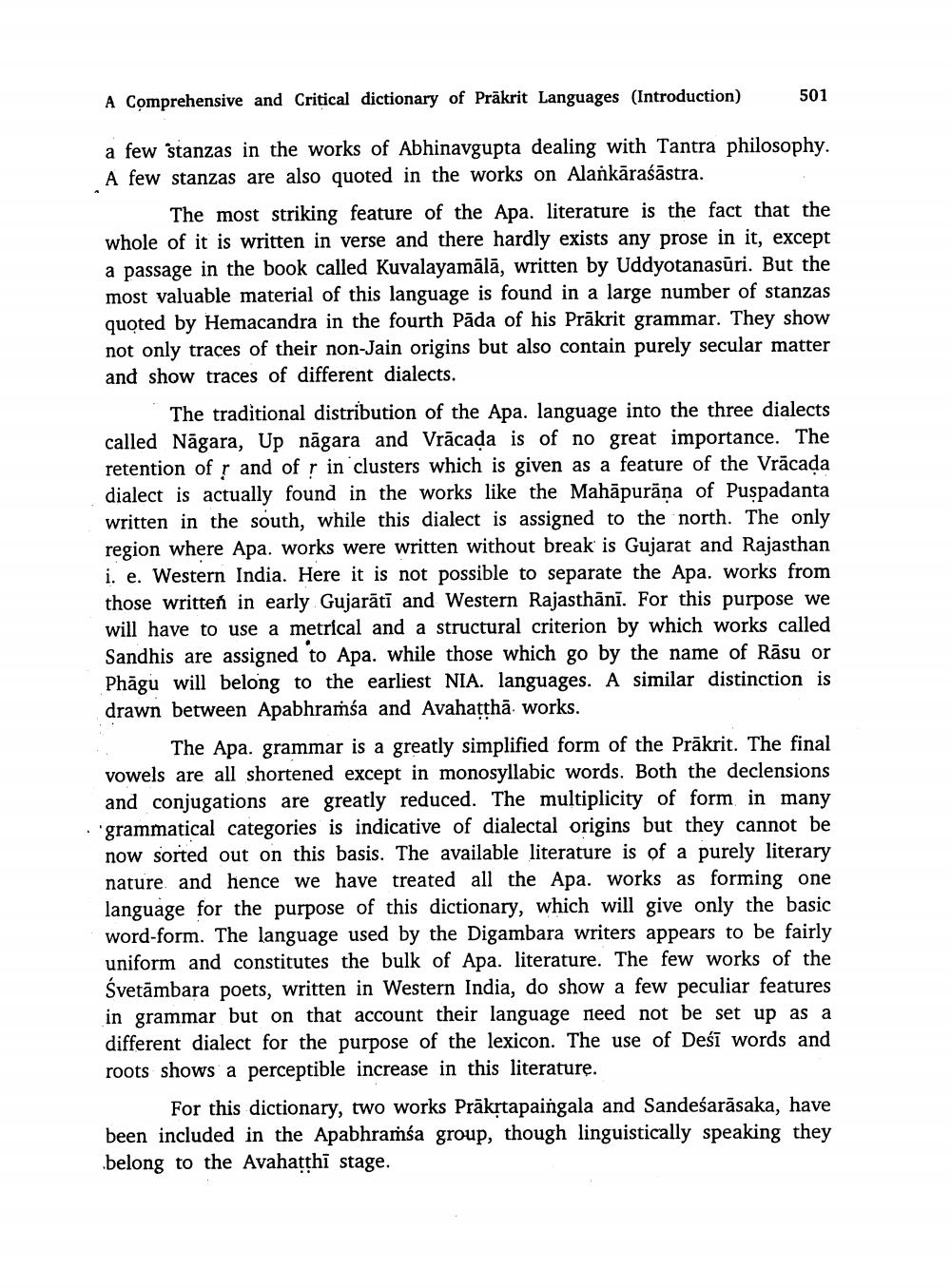________________
A Comprehensive and Critical dictionary of Prākrit Languages (Introduction)
501
a few stanzas in the works of Abhinavgupta dealing with Tantra philosophy. A few stanzas are also quoted in the works on Alankāraśāstra.
The most striking feature of the Apa. literature is the fact that the whole of it is written in verse and there hardly exists any prose in it, except a passage in the book called Kuvalayamālā, written by Uddyotanasūri. But the most valuable material of this language is found in a large number of stanzas quoted by Hemacandra in the fourth Päda of his Prākrit grammar. They show not only traces of their non-Jain origins but also contain purely secular matter and show traces of different dialects.
The traditional distribution of the Apa. language into the three dialects called Nāgara, Up nāgara and Vrācada is of no great importance. The retention of ļ and of ș in clusters which is given as a feature of the Vrācada dialect is actually found in the works like the Mahāpurāna of Puspadanta written in the south, while this dialect is assigned to the north. The only region where Apa. works were written without break is Gujarat and Rajasthan i. e. Western India. Here it is not possible to separate the Apa. works from those written in early Gujarāti and Western Rajasthānī. For this purpose we will have to use a metrical and a structural criterion by which works called Sandhis are assigned to Apa. while those which go by the name of Rāsu or Phāgu will belong to the earliest NIA. languages. A similar distinction is drawn between Apabhramsa and Avahatthā works.
The Apa. grammar is a greatly simplified form of the Prākrit. The final vowels are all shortened except in monosyllabic words. Both the declensions
and conjugations are greatly reduced. The multiplicity of form in many · grammatical categories is indicative of dialectal origins but they cannot be
now sorted out on this basis. The available literature is of a purely literary nature and hence we have treated all the Apa. works as forming one language for the purpose of this dictionary, which will give only the basic word-form. The language used by the Digambara writers appears to be fairly uniform and constitutes the bulk of Apa. literature. The few works of the Śvetāmbara poets, written in Western India, do show a few peculiar features in grammar but on that account their language need not be set up as a different dialect for the purpose of the lexicon. The use of Deśī words and roots shows a perceptible increase in this literaturę.
For this dictionary, two works Prākrtapaingala and Sandeśarāsaka, have been included in the Apabhramśa group, though linguistically speaking they belong to the Avahatthi stage.




